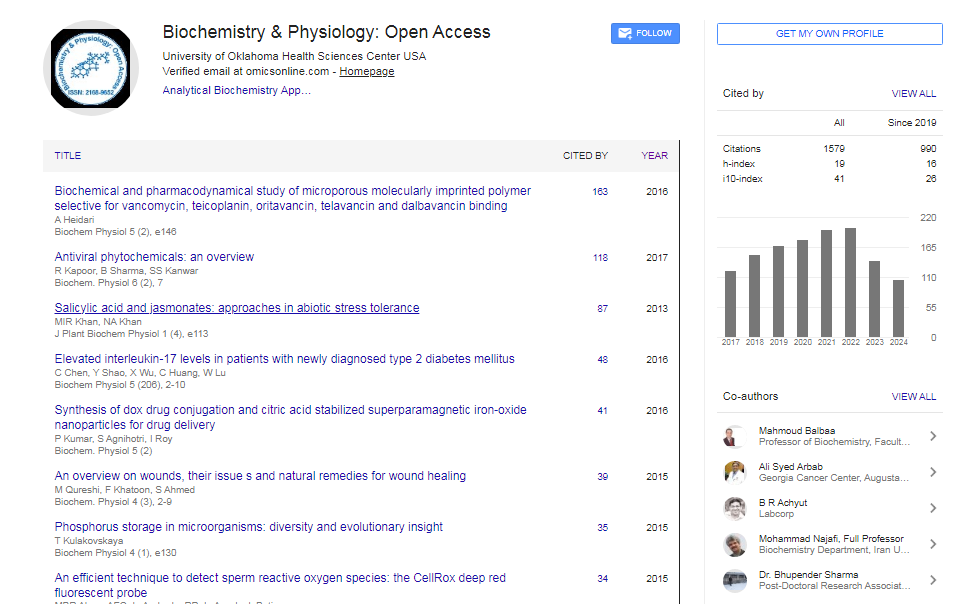Review Article
Biochemical Sulfuryl Group Transfer From 3'-Phosphoadenosine 5'-Phosphosulfate (PAPS) Versus Phosphoryl Transfer From ATP: What Can Be Learnt?
| KV Venkatachalam* | |
| Department of Biochemistry, College of Medical Sciences, Nova Southeastern University, Ft. Lauderdale, FL-33328, USA | |
| Corresponding Author : | KV Venkatachalam Department of Biochemistry, College of Medical Sciences Nova Southeastern University, Ft. Lauderdale, FL-33328, United States Tel: (954)262-1870 E-mail: venk@nova.edu |
| Received: November 18, 2015; Accepted: December 21, 2015; Published: January 07, 2016 | |
| Citation: Venkatachalam KV (2016) Biochemical Sulfuryl Group Transfer From 3’-Phosphoadenosine 5’-Phosphosulfate (PAPS) Versus Phosphoryl Transfer From ATP: What Can Be Learnt? Biochem Physiol 5:192. doi:10.4172/2168- 9652.1000192 | |
| Copyright: © 2016 Venkatachalam KV. This is an open-access article distributed under the terms of the Creative Commons Attribution License, which permits unrestricted use, distribution, and reproduction in any medium, provided the original author and source are credited. | |
Abstract
Phosphotransferases (kinases) use ATP as the universal phosphoryl donor whereas sulfotransferases use PAPS as the universal sulfuryl donor. Once phosphoryl group is transferred to a recipient molecule, it receives total of two negative charges changing its physicochemical properties. Similarly, upon sulfuryl transfer the recipient molecule receives one negative charge from the sulfonate group. Aside from this difference are there any other advantages of choosing an additional element in the biological systems? It appears that the phosphoryl transfer reactions take place during cell cycle/signaling and in primary metabolism. Whereas, sulfuryl transfer reaction happens mainly to the secondary metabolites/protein transformations? In this paper, I have compared the overall biochemical aspects of phosphate/ sulfate metabolic activation and the variety of phosphate/sulfate based cofactors. ATP, CoA, PAPS, NADP+, NAD+, FAD+ and SAM, all share the presence of adenosyl moiety. ATP, SAM and FAD+ contain only 5’ phosphate. CoA and PAPS in addition to 5’ phosphate have 3’ phosphate. CoA has the terminal pantotheine sulfur in the reduced thiol form whereas PAPS contain sulfate (the most oxidized form of sulfur). SAM has sulfur in cationic form that is attached to adenosyl group. NADP+ has 2’ phosphate in addition to the unique 5’-5’ linked phosphates. Thus, the nucleotide cofactor varieties from sulfur and phosphates are intriguing and add interesting evolutionary combinations to the biological systems.

 Spanish
Spanish  Chinese
Chinese  Russian
Russian  German
German  French
French  Japanese
Japanese  Portuguese
Portuguese  Hindi
Hindi 